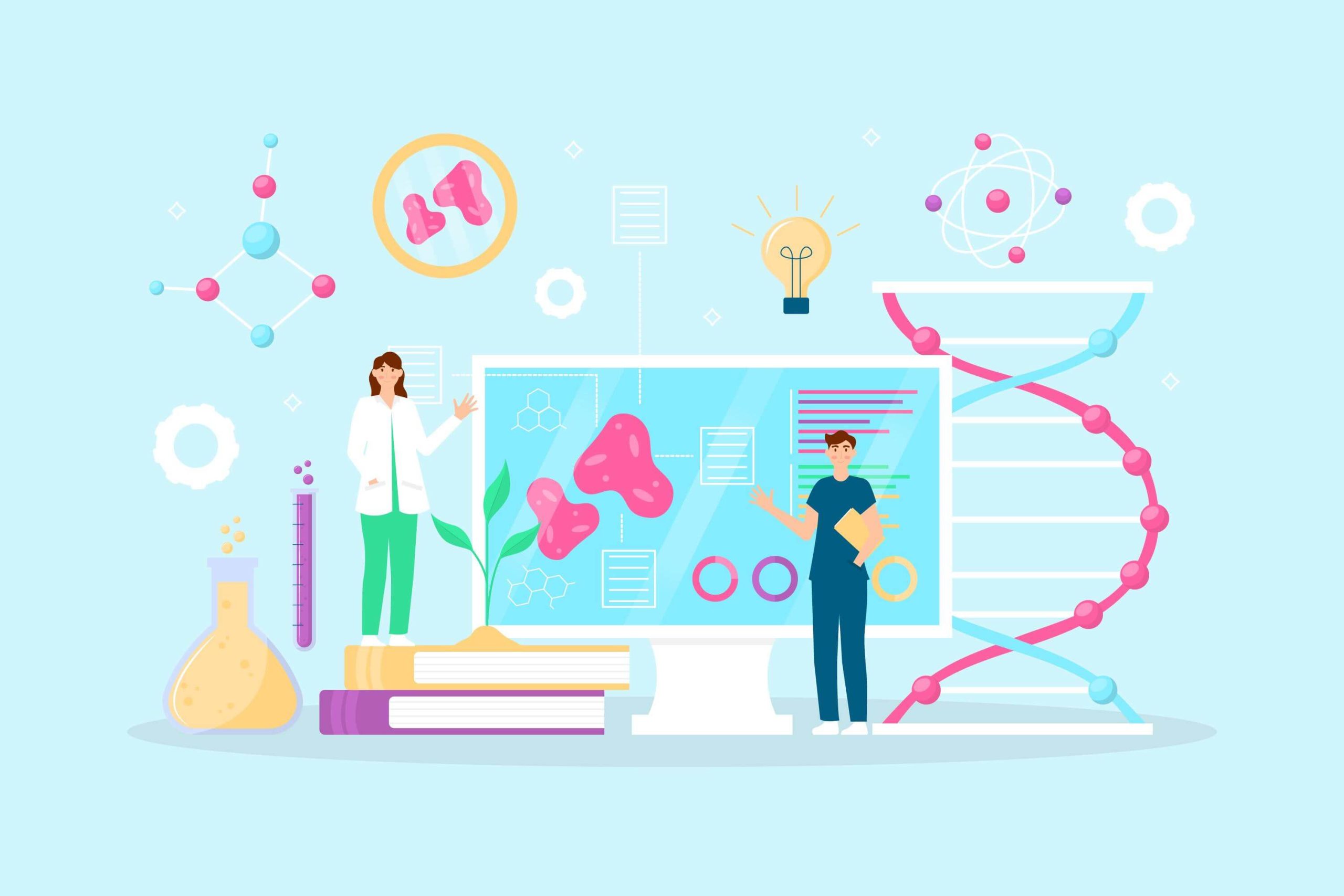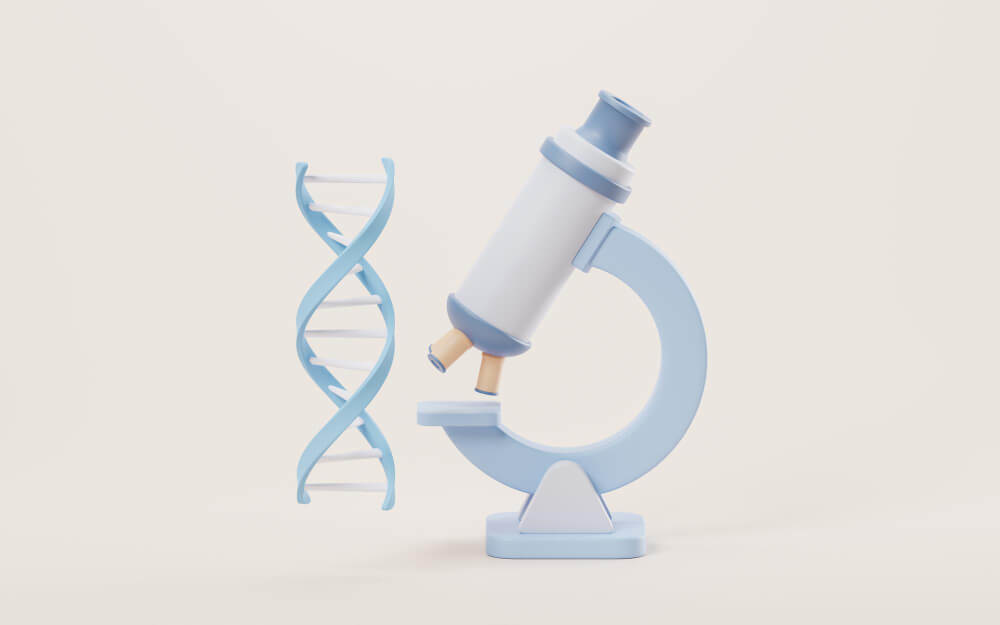The Future of Health: A Deep Dive into Longevity Medicine
Think about your last visit to the doctor. It likely involved a conversation about a specific symptom, a routine check of your vitals, and perhaps a prescription to manage an existing condition. This model of healthcare is familiar to us all. It’s a reactive system designed to address problems once they arise. But what if there was a different way? What if medicine focused not just on treating sickness, but on actively extending the years you feel healthy, vibrant, and fully capable?
This is the fundamental promise of a revolutionary and rapidly growing field. It’s an approach that seeks to shift the paradigm from simply increasing lifespan to dramatically improving healthspan, which is the period of life spent in good health. Instead of waiting for the check engine light to come on, this new medical philosophy is about tuning the engine for optimal performance throughout your entire life journey.
This proactive, data-driven, and highly personalized approach is the core of longevity medicine. It represents a departure from the one-size-fits-all model, leveraging cutting-edge science to understand your unique biology and create a roadmap for a longer, healthier future. It’s about being the architect of your own health, with a skilled physician as your guide.

What is Longevity Medicine, Really?
At its heart, longevity medicine is a clinical specialty that applies the science of geroscience, the study of aging itself, to prevent age-related diseases and dysfunction. The goal isn’t just to help you live to be 100. The goal is to help you feel like you’re 50 when you’re 80, maintaining physical strength, cognitive sharpness, and overall vitality.
It operates on the principle that aging is the single greatest risk factor for nearly every major chronic disease, including heart disease, cancer, diabetes, and neurodegenerative disorders like Alzheimer’s. By targeting the biological mechanisms of aging itself, such as cellular senescence, mitochondrial dysfunction, and inflammation, practitioners can delay or even prevent the onset of these conditions.
This isn’t science fiction. It’s a sophisticated medical practice that integrates advanced diagnostics, genomics, and biomarker analysis with personalized interventions. These interventions span nutrition, exercise, sleep optimization, targeted supplementation, and advanced therapies. It’s a comprehensive system for health optimization, not just disease management.
The philosophy can be summed up in a powerful phrase: to die young at a very old age. This means compressing the period of illness and frailty at the end of life into the shortest possible time, allowing for more decades of robust health and activity.

How Does Longevity Medicine Differ from Preventive Care?
On the surface, longevity medicine and preventive care seem very similar. Both aim to keep you healthy and avoid disease, which is a significant step up from purely reactive medicine. However, while they share a common goal, their scope, depth, and methodologies are quite different.
Standard preventive health care is what most of us are familiar with. It includes annual physicals, age-appropriate cancer screenings like mammograms and colonoscopies, vaccinations, and routine blood pressure and cholesterol checks. Its focus is on early detection of known diseases. It asks the question, ‘Do you have this specific disease yet?’.
This approach is incredibly valuable. The Centers for Disease Control and Prevention highlights the immense importance of preventive care in reducing the burden of chronic diseases, which are the leading causes of death and disability in the United States. The entire medical specialty of preventive medicine is dedicated to promoting health and well-being for individuals and communities through these established strategies.
Leading institutions have long advocated for these practices. Guidance on preventive care from top medical centers provides a clear framework for the screenings and checkups everyone should have at various life stages. This is the foundation of good health maintenance.
Longevity medicine builds upon this foundation and takes it several steps further. It doesn’t just ask if you have a disease; it asks why you might develop a disease in the future and what can be done now to change that trajectory. It looks at the upstream biological processes that lead to disease, aiming to optimize the entire system rather than just screen for downstream problems.
While preventive care might monitor your LDL cholesterol, longevity medicine will look deeper at metrics like ApoB, lipoprotein(a), and particle size to get a much more nuanced picture of your cardiovascular risk. It moves from early detection to true, deep prevention by analyzing the root causes of aging and optimizing health at a cellular level.

What Are the Core Principles of a Longevity-Focused Approach?
A successful longevity strategy is built on several key pillars that work together synergistically. It’s a holistic system where each component informs and enhances the others, creating a personalized and dynamic plan for health optimization.

What Role Do Advanced Diagnostics Play?
The starting point for any longevity program is data, and lots of it. This goes far beyond the standard blood panel you get at an annual physical. The goal is to create a high-resolution snapshot of your current biological state.
This often begins with deep biomarker analysis. Instead of just checking if your glucose is in the ‘normal’ range, a longevity physician will look at fasting insulin, HbA1c, and other markers to assess your metabolic health and insulin sensitivity with much greater precision. They will measure markers for inflammation like hs-CRP, for nutrient status like Vitamin D and B12, and for cardiovascular risk like homocysteine and ApoB.
Genomic testing is another critical tool. This doesn’t tell you your destiny, but it does reveal your blueprint. Understanding your genetic predispositions for certain conditions allows for hyper-personalized preventive strategies. If you have a gene variant that makes you less efficient at processing B vitamins, for instance, a targeted supplementation plan can be created to mitigate that risk.
Perhaps the most fascinating diagnostic tool is the measurement of biological age. Using epigenetic clocks, which analyze methylation patterns on your DNA, physicians can estimate your biological age compared to your chronological age. This provides a powerful metric for tracking the effectiveness of interventions. The goal is to see your biological age slow down, stop, or even reverse over time.

How Important is Personalized Nutrition?
We’ve all been exposed to an endless cycle of diet trends, from low-fat to low-carb and everything in between. Longevity medicine cuts through the noise by recognizing that there is no single perfect diet for everyone. The optimal nutritional strategy is deeply personal and depends on your unique genetics, metabolism, and goals.
Continuous glucose monitors (CGMs) have become a cornerstone of personalized nutrition. These small wearable devices track your blood sugar levels in real-time, revealing exactly how your body responds to different foods. You might discover that a ‘healthy’ bowl of oatmeal spikes your blood sugar, while another person tolerates it perfectly. This data allows for precise dietary adjustments to maintain stable energy levels and reduce the risk of metabolic disease.
Nutrigenomics, the study of how food and genes interact, also plays a major role. Your genetic makeup can influence how you metabolize fats, how sensitive you are to caffeine, or your individual need for certain micronutrients. A longevity plan uses this information to craft a diet that works with your biology, not against it.
This personalized approach might incorporate principles from various well-researched dietary patterns. Concepts like time-restricted eating or intermittent fasting can be powerful tools for improving cellular repair processes like autophagy. A Mediterranean-style diet, rich in polyphenols and healthy fats, might be recommended. The key is that these strategies are not applied blindly but are tailored to the individual’s data and lifestyle.

What About Exercise and Movement?
The mantra of ‘move more’ is good advice, but longevity medicine refines it into a precise prescription. The type, duration, and intensity of exercise are tailored to optimize specific biological pathways for healthspan. A comprehensive fitness plan for longevity typically includes three key components.
First is Zone 2 cardiovascular exercise. This is steady-state activity, like a brisk walk or light jog, where you can still hold a conversation. This type of training is uniquely effective at improving mitochondrial health. Your mitochondria are the power plants of your cells, and their decline is a hallmark of aging. Improving their number and function is critical for energy, endurance, and overall cellular health.
Second is resistance training. Building and maintaining muscle mass is one of the most important things you can do for metabolic health and functional independence as you age. Muscle is a massive sink for glucose, helping to regulate blood sugar. It also supports bone density and protects against sarcopenia, the age-related loss of muscle that leads to frailty.
Third is a focus on stability and mobility. As we age, our risk of falls and injury increases dramatically. Exercises that improve balance, flexibility, and range of motion are not an afterthought but a critical part of the plan. This ensures you can continue to do all the activities you love, safely and confidently, for decades to come.

Is Sleep Really That Critical?
For decades, sleep was often seen as a luxury or something to be sacrificed in the name of productivity. Longevity science has unequivocally shown this to be a mistake. Sleep is a non-negotiable biological necessity, and optimizing it is one of the most powerful levers we can pull for our health.
During deep sleep, your body undertakes critical repair processes. Your brain clears out metabolic waste products, including amyloid plaques associated with Alzheimer’s disease, through the glymphatic system. Your body regulates key hormones, including growth hormone for repair and cortisol for stress.
Poor sleep disrupts every system in the body. It impairs immune function, dysregulates blood sugar, increases inflammation, and accelerates cognitive decline. A longevity approach treats sleep with the seriousness it deserves.
This involves using wearable technology like rings or watches to track sleep stages, duration, and quality. Based on this data, a practitioner can help you implement a personalized sleep hygiene protocol. This might include setting a consistent sleep schedule, optimizing your bedroom environment for darkness and temperature, managing light exposure, and developing a relaxing wind-down routine.

What Kind of Treatments and Protocols Are Used?
Once a comprehensive baseline of data is established, a longevity physician develops a personalized treatment plan. This plan is dynamic, evolving as new data comes in and your body responds to the interventions. The toolkit is vast and tailored to the individual’s specific needs.
Targeted supplementation is a common starting point. Based on detailed blood work, specific deficiencies or suboptimal levels of key nutrients are addressed. This is not about taking a generic multivitamin but precisely correcting imbalances in things like Vitamin D, magnesium, omega-3 fatty acids, or B vitamins to support optimal cellular function.
In some cases, prescription medications may be considered, often used ‘off-label’ for their potential pro-longevity effects. This is an area of active research and must only be done under the careful supervision of a knowledgeable physician. These interventions are part of a holistic plan, not a magic pill.
Another key area is hormone optimization. As we age, levels of crucial hormones like testosterone, estrogen, and DHEA naturally decline, leading to symptoms like fatigue, loss of muscle mass, brain fog, and reduced libido. Restoring these hormones to more youthful levels can have a profound impact on quality of life and health markers. For instance, a comprehensive approach must understand how to address erectile dysfunction in hypogonadal men as one part of a larger strategy to restore systemic health and vitality.
These advanced interventions are not administered randomly. Clinicians in this field follow highly structured longevity medicine protocols for patient care that ensure a systematic, evidence-based approach. This creates a clear roadmap for each person, outlining the sequence of diagnostics, interventions, and follow-up testing required to track progress and ensure safety.
Because this level of deep personalization and advanced testing often falls outside the scope of traditional insurance coverage, many clinics operate on a direct-pay model. This requires that practitioners not only be excellent clinicians but also savvy entrepreneurs who can build a sustainable practice. Developing a sound business strategy for a cash-pay longevity practice is essential for making this cutting-edge care available to more people.

Who is a Good Candidate for Longevity Medicine?
The simple answer is anyone who is serious about investing in their future health. Longevity medicine is not just for the wealthy or the elderly. It is for the 35-year-old who wants to maintain peak physical and cognitive performance for as long as possible. It is for the 50-year-old who has seen their parents suffer from chronic disease and wants to write a different story for themselves.
It is for anyone who wants to shift from a passive recipient of healthcare to an active participant in their own well-being. It requires a commitment to change and a belief that the future of your health is largely within your control. It’s for those who want to add more life to their years, not just more years to their life.
Longevity medicine is the ultimate expression of proactive health. It combines the wisdom of preventive care with the power of modern technology and systems biology to create a truly personalized roadmap to a longer, healthier, and more vibrant life. It is not about avoiding death; it is about fully embracing life, for as long as possible.
Frequently Asked Questions

Do I need a doctor’s prescription to get a CGM for general wellness?
In most countries, including the United States, continuous glucose monitors are classified as medical devices and require a prescription for purchase. However, a growing number of health and wellness companies now facilitate this process for individuals without diabetes. These platforms partner with telehealth providers who can legally prescribe a CGM after a brief online consultation and health screening.
This streamlined approach makes the technology accessible to the general public interested in proactive health, not just those managing a diagnosed condition. When you sign up for one of these services, your information is reviewed by a licensed clinician who provides the necessary prescription as part of the overall program. This removes the barrier of needing to convince your primary care physician to prescribe a device for an off-label wellness use.

What should I do if my CGM shows a big glucose spike after a meal?
A single glucose spike is not a cause for panic; instead, view it as a valuable piece of data about your unique metabolic response. The first step is to analyze the context by noting what you ate, the portion size, and the time of day. Consider other factors as well, such as your stress levels, recent sleep quality, and whether you were sedentary after the meal.
Armed with this information, you can run experiments to flatten your curve in the future. The next time you eat a similar meal, try adding more fiber, protein, or healthy fats to slow down glucose absorption. Another effective strategy is to engage in light physical activity, like a 15-minute walk, shortly after eating to help your muscles utilize the glucose.

How long should I wear a CGM to get meaningful health insights?
To gather a comprehensive baseline of your metabolic health, wearing a CGM for at least 30 days is highly recommended. This duration provides enough time to test a wide variety of foods, meal combinations, exercise routines, and lifestyle factors like stress and sleep. A full month allows you to observe patterns and understand how your body responds beyond just a few isolated events.
After this initial discovery period, continuous year-round use isn’t always necessary for proactive health management. Many people find success with periodic monitoring, such as wearing a sensor for two to four weeks every quarter to check in and make adjustments. This approach helps you stay on track and see the impact of new habits without the long-term commitment and cost of constant monitoring.
Discover the most comprehensive functional medicine training, longevity training, and biohacking certification programs designed specifically for healthcare professionals, medics, and clinic owners who want to master regenerative medicine protocols and anti-aging therapies.







